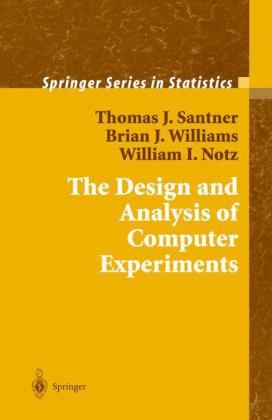Read more
This book describes methods for designing and analyzing experiments conducted using computer code in lieu of a physical experiment. It discusses how to select the values of the factors at which to run the code (the design of the computer experiment). It also provides techniques for analyzing the resulting data so as to achieve these research goals.
List of contents
From the contents:
Physical Experiments and Computer Experiments.- Basic Elements of Computer Experiments.- Analyzing Output from Computer Experiments-Predicting Output from Training Data.- Space Filling Designs for Computer Experiments.- Criteria Based Designs for Computer Experiments.-Other Issues.
Summary
This book describes methods for designing and analyzing experiments conducted using computer code in lieu of a physical experiment. It discusses how to select the values of the factors at which to run the code (the design of the computer experiment).
Report
From the reviews:
"This is quite a unique book and may fill a void in the design of experiments literature." Techonmetrics, November 2004
"This book will be a valuable reference for for any statistitican who is collaborating with scientists who use computer experiments or is interested in pursuing research in the area." Biometrics, March 2005
"This book describes methods for designing and analyzing experiments conducted using computer program to replace a physical experiment. ... To the best of my knowledge, there has been no book yet written in the area of computer experiment. ... Therefore, this is quite a unique book and may fill a void in the design of experiments literature. As mentioned in the Preface, this book has tried to keep the mathematics at the level of readers with master's-level training in statistics." (Lih-Yuan Deng, Technometrics, Vol. 46 (4), November, 2004)
"The book by Thomas Santner et al. illustrates the usefulness of computer models and statistical methodologies to extract information in stimulated data ... . Computer modeling has been challenging to the practitioners, and this book eases these challenges with the exposure of basic ideas and daunting formulas. This well written book seven chapters ... . The references are exhaustive and current." (Ramalingam Shanmugam, Journal of Statistical Computation and Simulation, Vol. 75 (2), February, 2005)

